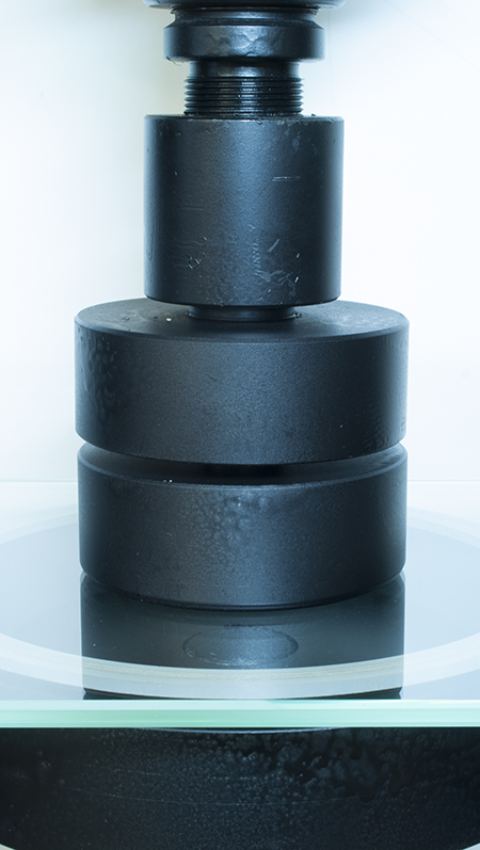Glass and Facade Construction
Glass construction, facade construction & bonding
Prof. Dr.-Ing. Christian Schuler
In the field of "Glass construction, Façade Construction and Structural Bonding", supervised by Prof. Dr.-Ing. Christian Schuler, research topics are dealt with in a practical manner based on scientific methods. All fields are considered under the context of rehabilitation (repair) & sustainability. Classical topics in glass and facade construction are the optimization of manufacturing processes (tempered and curved glass), characterization of material properties (investigations on delamination in laminated glass) as well as load-bearing capacity investigations (facade construction and lightweight construction) using experimental and numerical methods. In the past, for example, the production process of chemically tempered glass and of heat-bent glass was reproducibly improved.
With previous research projects, the working group has built up expertise in the research field of anisotropies and photoelasticity. With the preparation of the standard DIN SPEC PAS 18198 in cooperation with renowned German glass manufacturers, thermally tempered glasses can be evaluated and classified.
The use of adhesive bonding technology in construction has increased steadily in recent years. Load-bearing adhesive bonds have been used in glass and facade construction for some time, although only a fraction of the potential has been exploited to date. With the Adhesive Competence Center and several research projects investigating the load-bearing behavior of bonded joints, the working group aims to improve the performance and reliability of products. Due to the institute's connection to steel construction, there is an overlap of issues that will be solved by adhesive bonding in the future. Currently, there are research activities in the field of strengthening of dynamically stressed infrastructure structures. In several completed research projects with small and medium-sized companies, initial assembly concepts were developed with an increase in fatigue strength by adhesive bonding.
The institute has a very well-equipped laboratory for experimental investigations. Particularly noteworthy are the static and dynamic universal testing machines with climatic chambers, the various aging and long-term support stands and the recently expanded stress-optical laboratory with full-area anisotropy scanners and an outdoor test stand for evaluating anisotropies under real lighting conditions. Research is supported by the Labor für Stahl- und Leichtmetallbau GmbH. This associated institute provides extensive test facilities for testing steel and lightweight components, glass structures and facades under various load and environmental conditions. The laboratory is a certified testing laboratory. The institute is represented in several national and international committees and very well connected with the industry. In connection with the research activities, the Institute organizes several national conferences.
